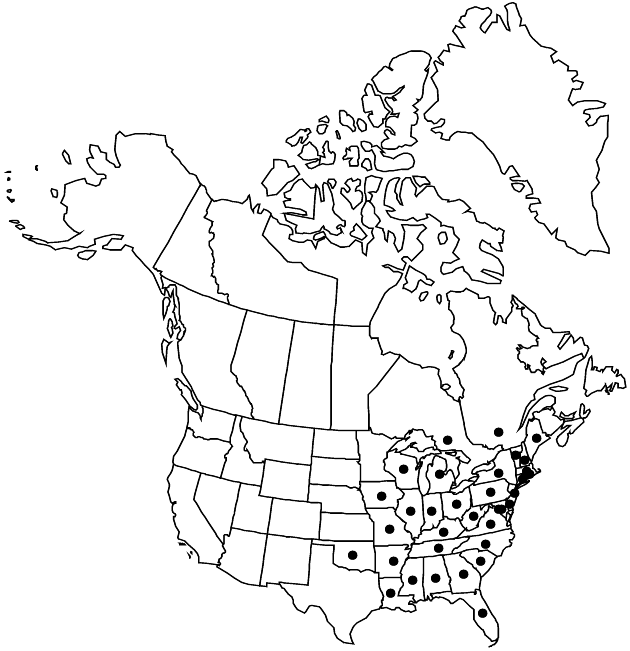Helianthus divaricatus
Sp. Pl. 2: 906. 1753.
Perennials, 20–150 cm (rhizomatous). Stems erect, usually glabrous, rarely ± hairy (often glaucous). Leaves cauline; opposite; sessile; blades (light to dark green, sometimes whitish abaxially, 3-nerved at bases) lanceolate to lanceovate, 6–15 × 1–5 cm, bases rounded to cordate, margins subentire to serrate, abaxial faces sparsely hispid to hispidulous, glanddotted. Heads 1–10. Peduncles 0.5–9 cm. Involucres hemispheric, 10–15 mm diam. Phyllaries 18–25, lanceolate, lance-linear, or lanceovate, 6–12 × 2–2.5 mm, (margins ciliate) apices acuminate to attenuate, abaxial faces hispidulous to glabrate, not glanddotted. Paleae 5–8 mm, 3-toothed (apices ciliate). Ray-florets 8–12; laminae 15–30 mm. Disc-florets 40+; corollas 4.2–5.5 mm, lobes yellow; anthers usually dark-brown to black, appendages yellow. Cypselae 3–3.6 mm, glabrate; pappi of 2 aristate scales 2.2–2.5 mm. 2n = 34.
Phenology: Flowering summer–early fall.
Habitat: Dry, open sites
Elevation: 10–900+ m
Distribution

Ont., Que., Ala., Ark., Conn., Del., D.C., Fla., Ga., Ill., Ind., Iowa, Ky., La., Maine, Md., Mass., Mich., Miss., Mo., N.H., N.J., N.Y., N.C., Ohio, Okla., Pa., R.I., S.C., Tenn., Vt., Va., W.Va., Wis.
Discussion
One of the earlier flowering perennial Helianthus, H. divaricatus resembles the tetraploid H. hirsutus but differs by its usually glabrous and often glaucous stems, sessile or subsessile leaves, and smaller reproductive organs (disc corollas, paleae, cypselae). Plants from the Ozark region of Arkansas have larger leaves and heads and may represent a polyploid form of H. divaricatus. Natural hybrids with H. microcephalus have been named H. glaucus Small (D. M. Smith and A. T. Guard 1958). Hybrids with other species differ from H. divaricatus in having short but distinct petioles, hairy stems, leaves with more rounded bases, and primary lateral leaf veins diverging in a subopposite manner distal to bases, rather than being strictly opposite and basal.
Selected References
None.